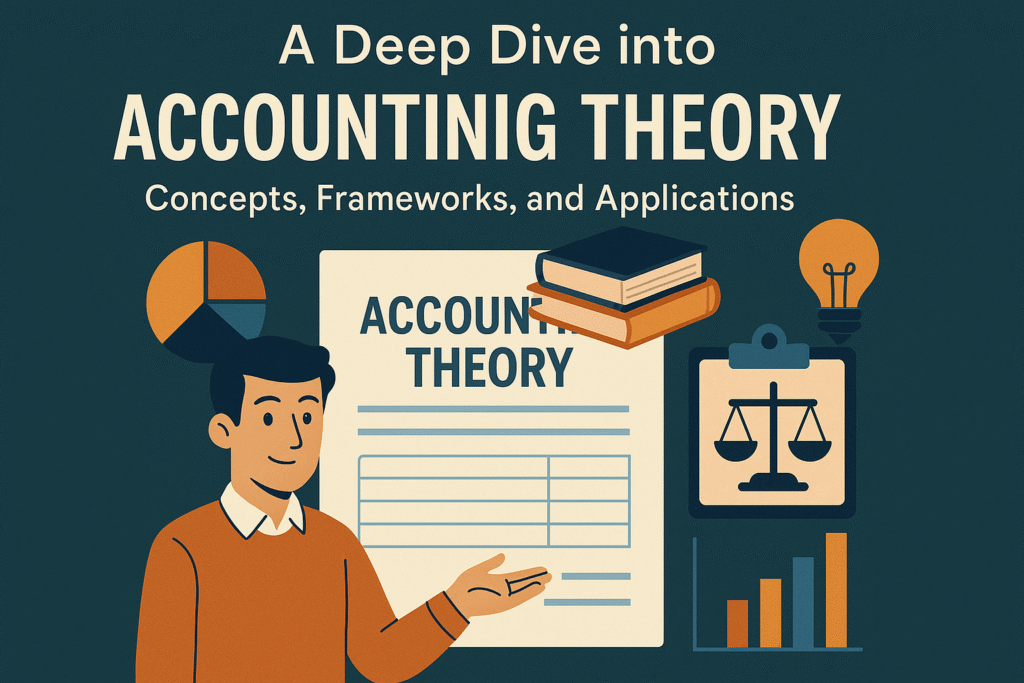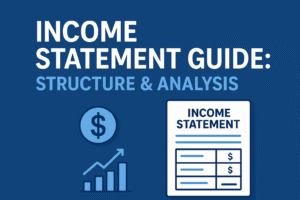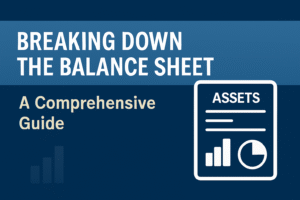Accounting theory is a systematic framework of principles, assumptions, and methodologies that guide the practice and interpretation of accounting. It provides the conceptual foundation for how financial transactions should be recorded, measured, and reported. The goal of accounting theory is to ensure that financial statements are relevant, reliable, consistent, and comparable over time and across entities.
Accounting theory is not static—it evolves with changes in the business environment, economic conditions, and regulatory requirements. It combines both theoretical constructs and real-world applications, thereby serving as a bridge between abstract financial concepts and day-to-day accounting practices.
At its core, accounting theory aims to explain why certain accounting methods are used, not just how they are applied. This deeper understanding helps users of financial information—including investors, regulators, and management—make informed decisions.
Understanding Accounting Theory
Accounting theory can be understood through three major lenses:
1. Descriptive Accounting Theory
Descriptive theory aims to explain or describe current accounting practices. It observes how accountants actually behave and the techniques they use. This form of theory is empirical in nature and answers the question: What is happening in accounting practice today?
Example: A study might observe that 75% of manufacturing firms use FIFO (First-In, First-Out) inventory valuation for tax benefits, even though it may inflate profits during inflationary periods. This observation becomes part of descriptive theory.
2. Normative Accounting Theory
Normative theory prescribes how accounting should be done. It’s based on value judgments and promotes what ought to be, often with the goal of improving accounting standards for better transparency and comparability.
Example: Recommending that all companies use fair value measurement for investment properties to reflect current market conditions instead of outdated cost-based values.
3. Positive Accounting Theory (PAT)
This modern approach focuses on explaining and predicting accounting behaviors using economics and statistical models. It assumes that management chooses accounting methods that maximize their utility, often influenced by contracts or incentives.
Example: A CEO whose bonus is tied to net income might choose straight-line depreciation to reduce short-term expenses and report higher profits, aligning with the predictions of positive accounting theory.
4. Critical Accounting Theory
Critical theory examines the broader social, political, and economic implications of accounting. It challenges traditional practices that may perpetuate inequality or lack transparency.
Example: Critiquing how multinational corporations use aggressive transfer pricing to shift profits to low-tax countries, thereby minimizing tax liabilities in higher-tax jurisdictions.
The FASB Conceptual Framework: Foundation of U.S. Accounting Standards
The Financial Accounting Standards Board (FASB) plays a pivotal role in shaping U.S. accounting theory through its Conceptual Framework for Financial Reporting. This framework serves as the foundation for developing consistent accounting standards and helps users understand and interpret financial information.
Key Components of the FASB Framework:
1. Objective of Financial Reporting
The primary objective is to provide financial information that is useful to current and potential investors, creditors, and other stakeholders in making decisions about resource allocation.
2. Qualitative Characteristics of Useful Financial Information
- Fundamental Characteristics:
- Relevance: Information must be capable of making a difference in decision-making.
- Faithful Representation: Must be complete, neutral, and free from error.
- Enhancing Characteristics:
- Comparability
- Verifiability
- Timeliness
- Understandability
Example: Two companies using the same method to depreciate equipment ensures comparability. If one uses declining balance and another uses straight-line, investors may struggle to assess performance equally.
3. Elements of Financial Statements
Defined categories such as:
- Assets
- Liabilities
- Equity
- Revenues
- Expenses
- Gains and Losses
These elements form the building blocks of financial statements.
4. Recognition and Measurement Principles
The framework provides guidance on when and how to recognize and measure elements in the financial statements, using bases such as:
- Historical Cost
- Fair Value
- Net Realizable Value
- Present Value
Example: A company records land purchased in 2010 at $300,000 based on historical cost, even though its market value today may be $1 million. This aligns with the measurement principle of historical cost unless fair value is permitted or required.
5. Assumptions and Constraints
- Economic Entity: Business is separate from its owners.
- Going Concern: Entity will continue operating.
- Monetary Unit: Financial information is expressed in stable currency.
- Periodicity: Financial reporting occurs over set periods.
- Cost Constraint: Benefits of information should outweigh the costs of providing it.
Special Considerations in Accounting Theory
Accounting theory doesn’t operate in a vacuum—it is influenced by a variety of internal and external factors. These special considerations include:
1. Globalization and International Standards
As businesses operate globally, harmonization between U.S. GAAP and International Financial Reporting Standards (IFRS) becomes critical. Accounting theory must evolve to bridge differences in rules-based (GAAP) and principles-based (IFRS) frameworks.
Example: U.S. companies reporting to European investors may need to reconcile financials prepared under GAAP with IFRS for better transparency across jurisdictions.
2. Technology and Automation
With the rise of AI, blockchain, and data analytics, accounting theory must adapt to account for new forms of transaction processing, digital asset management, and real-time reporting. The traditional concept of periodicity, for instance, is being challenged by continuous auditing and integrated reporting.
Example: Blockchain-enabled accounting systems allow near-instantaneous verification of transactions, potentially eliminating the need for end-of-period reconciliations.
3. Ethical Considerations
Ethical behavior is a key pillar of accounting theory. The theory guides not just technical application, but also professional conduct. Concepts like transparency, accountability, and stewardship are core to theoretical development.
Example: An accountant refusing to manipulate earnings despite pressure from management upholds ethical standards derived from theoretical frameworks like normative accounting theory.
4. Environmental, Social, and Governance (ESG) Reporting
Accounting theory is increasingly influenced by the demand for non-financial disclosures. ESG factors are becoming central to accounting frameworks, requiring theory to expand beyond historical financial metrics.
Example: A company may disclose its carbon emissions and sustainability metrics in financial reports as part of integrated reporting frameworks inspired by evolving theoretical guidelines.
5. Political and Economic Pressures
Standard-setting bodies like FASB and IASB face pressure from governments, corporations, and interest groups. Accounting theory must remain objective while also navigating lobbying efforts that may aim to influence how standards are written and applied.
Example: In the aftermath of financial scandals, such as Enron, accounting theory adapted to call for stricter revenue recognition standards under ASC 606 to prevent manipulation.
Final Thoughts
Accounting theory serves as the intellectual backbone of the accounting profession. It doesn’t just dictate how numbers are crunched—it explains why certain methods are chosen, helps maintain consistency across financial reports, and ensures information meets the needs of users in a dynamic economic landscape. As business practices evolve, so too will accounting theory—balancing traditional financial principles with emerging realities.







